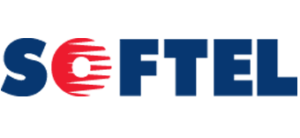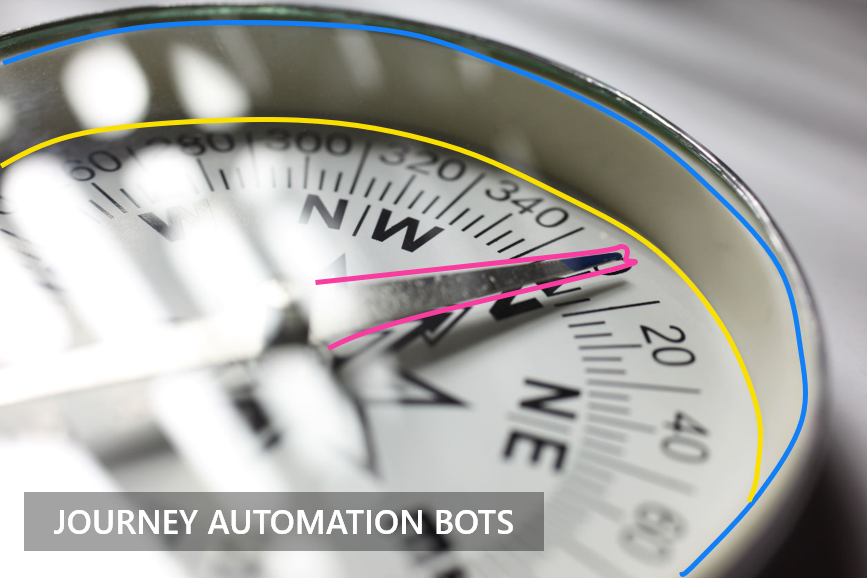Plug and Play Opportunities with Journey Automation Bots
As workplaces, business management, and customer service strategies continue to evolve in complexity, simplicity is quickly becoming the key to success. Simple, convenient, and streamlined solutions allow businesses to operate more efficiently even in a complex digital environment. Around 80% of business leaders say they’re now investing more in tools to simplify operations.
The question is, where exactly should business leaders be focusing their investment? How do we successfully make everything from team management to customer service simpler, without compromising on budget or reputation?
Plug-and-play automation could be the answer.
Defined by market leaders like Gartner as the future of digital transformation, automation technology can accelerate business success rates, while simultaneously eliminating exhausting, and complicated processes. A journey automation bot, for instance, can streamline migration from one software to another, improve onboarding experiences for employees, or improve HR communications, among other things.
Through journey automation technology, companies can access an engaging, bespoke experience for transformation, transition, migration, communication, and change adoption, to name a few. Most importantly, the benefits of automation don’t require additional support from a human expert.
Defining Journey Automation Bots
Automation technology is the futureproof method companies can use to transform a range of processes. With automation, businesses around the world are already improving countless processes with a higher degree of accuracy than manual processing. For instance, there are automation tools capable of automatically capturing data from a customer interaction in the contact center and logging that information for compliance purposes.
Automation also provides a high degree of accuracy when managing essential data in the business environment. Where manual processes like copy/pasting between screens are prone to inaccuracies and mistakes, automation eliminates the risk of error.
Automation technology can determine where service tickets should be routed, with the help of artificial intelligence to identify customer queries and agent skills. Journey automation takes the power of carefully-structured automatic workflows into a specific environment, to enhance the quality of a journey.
SOFTEL Journey Automation is a state-of-the-art plug and play solution for Journey automation in a host of use cases. Deployed across an Azure architecture, the technology uses Microsoft QNA Maker and Microsoft Luis, with Business Intelligence from Power BI built-in.
Using Microsoft-centric technology, Journey automation assists users in making the transition from one system to another – or through an upgrade experience – through automated processes. For instance, you can transition from Skype for Business to Microsoft Teams or transform from a legacy communication system into the cloud. Crucially, Journey Automation doesn’t just accelerate a transition, it improves the quality of the journey too, with support, guidance, and information built to empower the user.
An Example of Journey Automation: The Microsoft Migration
Among the most popular use cases we’ve seen so for Journey Automation, is the simplification of the transition into cloud communications. Companies are increasingly looking for efficient, plug-and-play solutions to help them make the migration from legacy and on-premises platforms, as old-fashioned equipment becomes less accessible.
In the Microsoft environment, for instance, Skype for Business reached end-of-life status in July 2021, forcing users to migrate to Microsoft Teams for continued support. Despite access to documentation and guidance from Microsoft, manual migration is often time-consuming, complex, and riddled with potential problems. Lack of migration intelligence and embedded support can lead to weeks, or even months of poor productivity during migration.
White glove migration services do exist, but for many businesses, they’re an expensive investment, and a drain on existing IT resources. Plug-and-play solutions like Journey Automation offer a cost-effective, viable alternative. As a system built in Microsoft, the technology is native to Teams, and equipped with tools for agentless end-user support.
With Journey Automation, companies can simplify the transition to cloud communications and contact center technology, with an agile environment packed with valuable information, AI-driven training and FAQ answering. There’s even an embedded help desk for incident creation and escalation, to reduce the risks of bottlenecks in the migration journey.
What Can Journey Automation Do?
Migrating from a legacy to a cloud-based environment for telephony and contact centre technology is just one example of how Journey Automation can simplify digital transformation. The ability to refine and build efficient end-to-end journeys lends itself to a number of valuable use cases, such as:
Employee Onboarding
The onboarding experience is one of the more complicated journeys many companies will need to handle both now and in the future. Journey Automation can assist new employees with settling into the organization, replacing repetitive and time-consuming tasks with simplicity. Rather than having to worry about document management and training, companies can create an automated journey designed to ease new employees into their environment fast.
An automated solution uses a structured and repeatable approach, suitable for use whenever someone new joins the team. Thanks to flexible technology, companies can modify procedures at speed, and collect valuable information in a standardized fashion, for error-free administration. The result is a better experience for both HR and the employee.
HR Communications
Speaking of HR, Journey Automation can also enable better HR communications. With the ability to leverage an interactive omnichannel system, Journey Automation can provide HR leaders with the ability to provide updates and share announcements with many employees at once. You can even track the read status of messages and prompt feedback from team members.
In the past, large one-to-many communications have had a number of technical limitations, and follow-ups have been time-consuming. Journey automation simplifies large-scale communications, paving the way for better two-way interactions across multiple channels. Access to data collection further paves the way for intelligence on employee engagement.
Platform Migrations
Telephony migration is only one example of how companies can use Journey Automation to simplify the transition to one investment ecosystem to another. In all kinds of industries, companies frequently need to move their users into new software and solutions for everything from data collection to collaboration, and time management.
Unfortunately, migrating to new technology in the business landscape is rarely a straightforward process. Employees need assistance to ensure they’re embracing and adopting the new technology correctly. Journey Automation optimizes the flow from one solution to another, providing answers to questions and training along the way.
Automation for Every Industry
Journeys are a fundamental part of the way we work in today’s digital world. Everything from managing software upgrades to ensuring compliance with new department processes requires a carefully planned approach. Journey automation considers each step in the transformational experience carefully, implementing tools to make the experience more efficient and engaging for everyone involved. The results are evident in almost every industry, including:
- The Enterprise: Any business invested in technology will have to go through a transition at some point in the future. Whether it’s the migration from on-premises to the cloud technology, or the transition from an old software solution to a new service, the right planning and support is essential. Journey automation ensures adoption and return on investment.
- Healthcare: In the healthcare industry, individuals need to follow carefully-structured procedures to maintain compliance with crucial standards. Journey automation can assist professionals in handling complex journeys effectively, whether they’re triaging patients, or training on how to use new hardware and equipment.
- Retail: Journey automation in the retail sector could simplify the process of onboarding and training new employees during periods of high turnover. It can provide employees with information and training so they can better sell new products and provide useful insights into recall procedures and product advisories.
- Finance: In the financial industry, Journey Automation can be used to simplify some of the more complex parts of the financial world, from portfolio processing and finding new opportunities for clients, to onboarding investors.
- Education: Educational groups manage a number of complex journeys every day. There’s admission processing to consider, and ensuring students have the right information on everything from accommodation to schedules. The right journey automation solutions can even help with student allocation.
- Government: Journey automation in the government industry simplifies departmental processing, allowing information and guidance to flow more seamlessly throughout the ecosystem. Journey automation can also be a valuable tool for ensuring compliance with local procedures and guidelines.
Building Your Own Ultimate Journey
As an open and adaptable solution, Journey Automation can also transform to suit the specific needs of different companies. For instance, you can access add-on modules for your Journey Automation strategies, integrating tools like Help Desk software and CRM technology to provide users with more valuable information during their journeys.
Integrated app logic for a help desk or CRM integration means the Journey Automation service can collect all of the required information a user might need and embed it within the service request created. This simple approach to integration allows for easy and fast connections between the critical tools companies use each day. Companies can also use integrations within Journey Automation for:
- LMS integrations: Training is often an important part of change management, and the adoption of new technology. The integration of an LMS technology into your Journey Automation solution means you can deliver training in a format that suits your users, through things like apps on Microsoft Teams.
- Power BI Integration: As a tool built on the Microsoft ecosystem, the Journey Automation offering naturally works well with existing Microsoft investments. Companies can integrate solutions like Overage bill back, for collecting information on voice consumption and charges. This allows access to granular data collection on a massive scale.
- Enterprise systems and solutions: Companies can use integrations with Journey Automation to integrate with existing enterprise systems and solutions, from business intelligence and tracking tools, to individual reporting systems capable of tracking the progress of users.
The flexibility of Journey Automation ensures companies can access customized, individual, and powerful journeys for the end-user, complete with quality service provisions through AI and automated interactions, embedded training tools, reporting systems, and knowledge bases with machine learning capabilities.
SOFTEL Journey Automation Solutions
SOFTEL’s range of journey automation solutions can unlock the benefits of plug-and-play automation for a wide range of use cases and industries. No matter your needs, SOFTEL’s simple and accessible solutions can adapt to suit your business, enhancing efficiency, productivity, and output.




